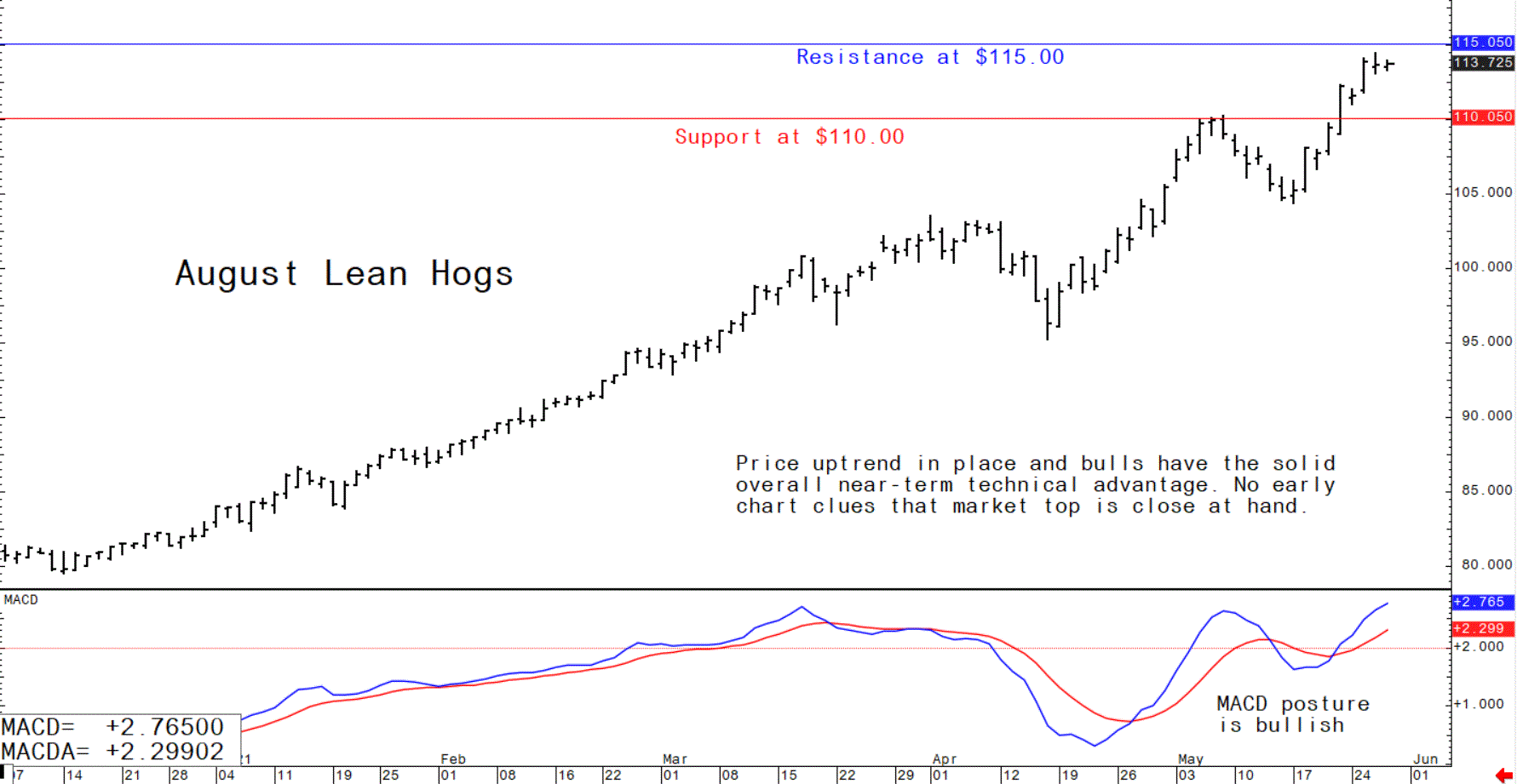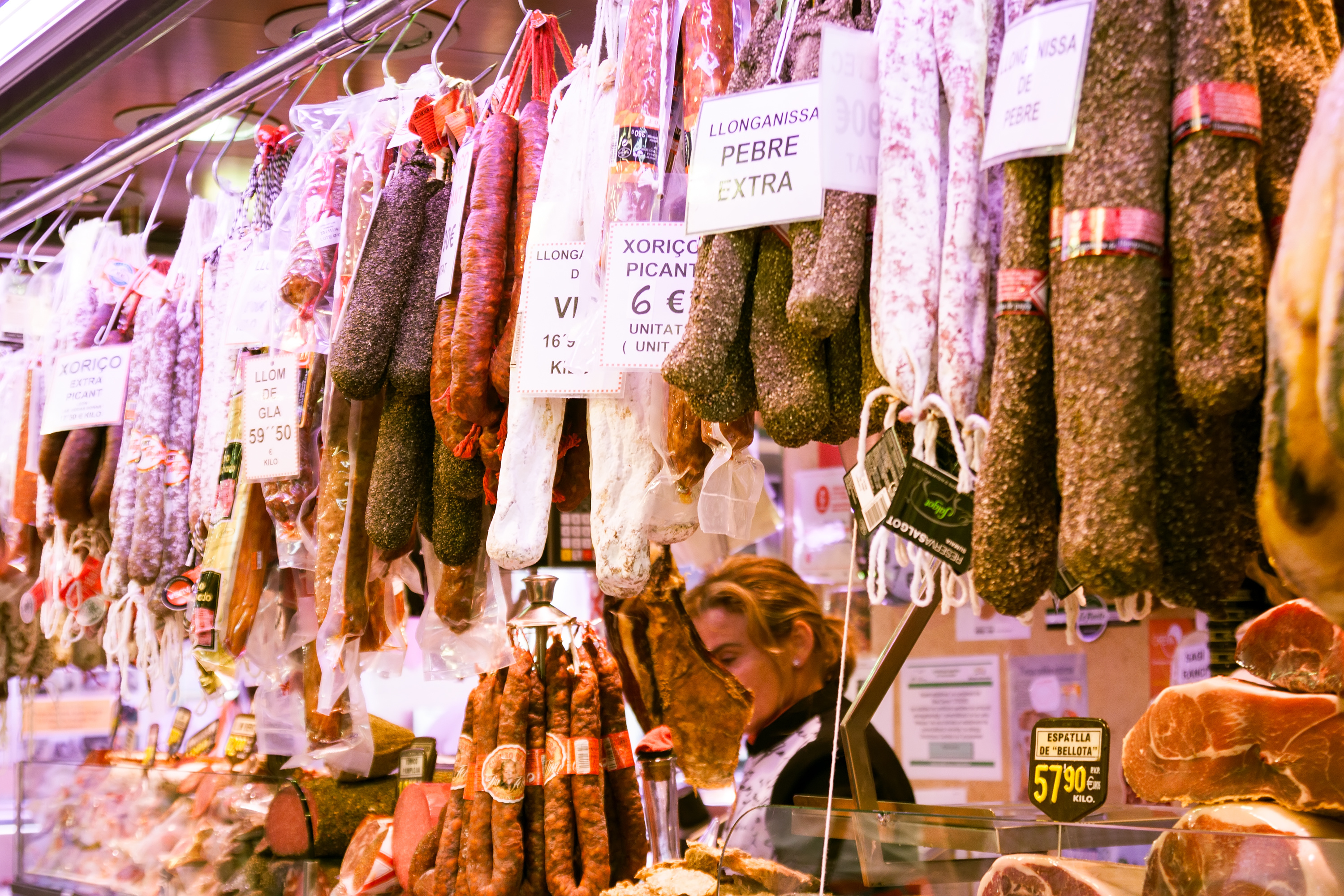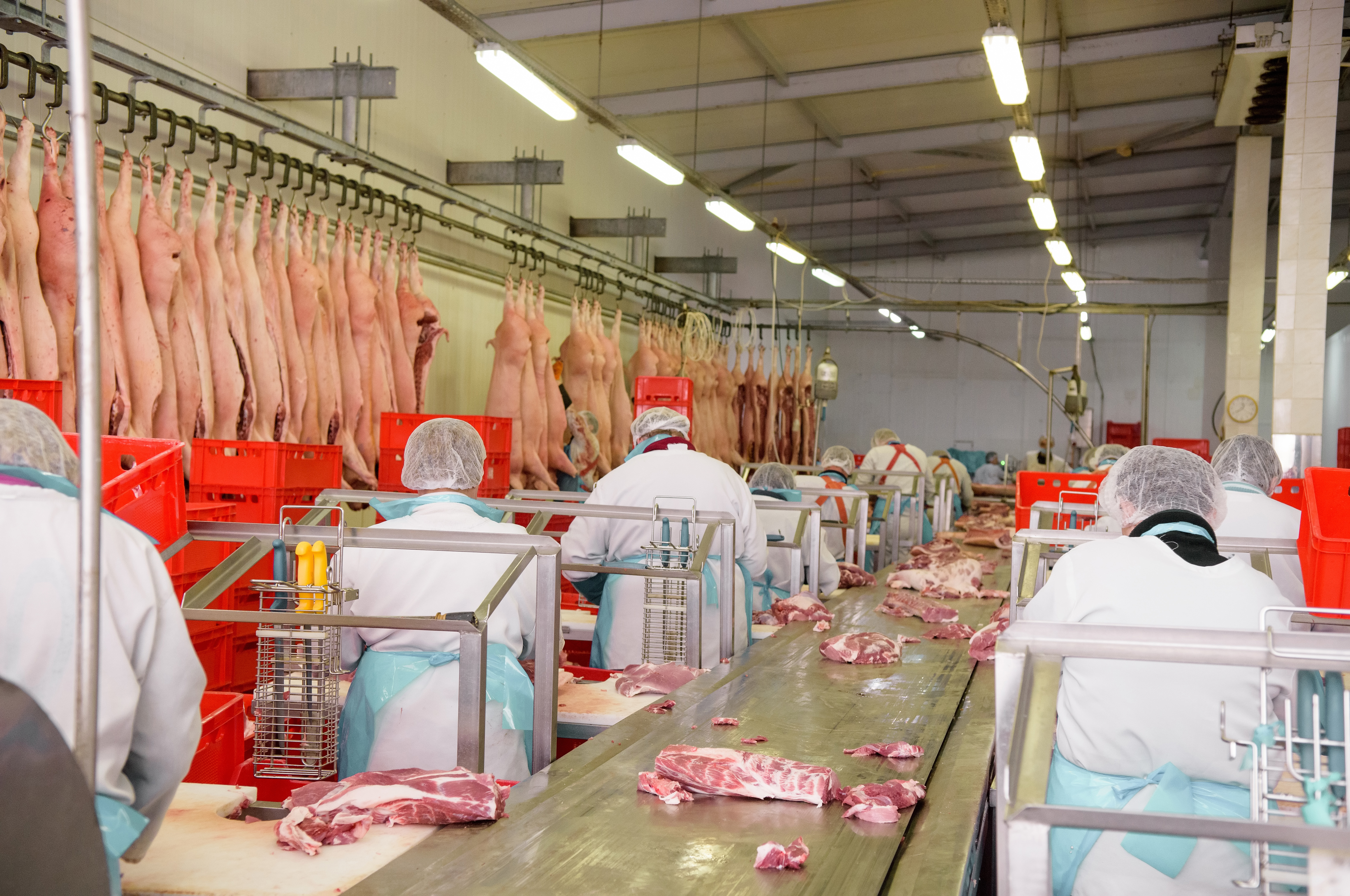



Pig outlook: lean hog futures bulls still have power
Lean hog futures are trending higher this week and US pork producers are resisting an order that would slow slaughter speeds at processing plants.The pig trader's perspective
Lean hog futures this week pushed to new contract highs as the strong bull market continues, with no early chart clues to suggest a market top is close at hand. Longer-term, hogs remain underpinned by strong pork demand and an outlook for cheaper feed costs.
Corn futures prices have tumbled 15% from an eight-year high of $7.35 a bushel, while soymeal prices sank to five-month lows. Pork supplies have tightened with the unofficial US summer grilling season kicking off this weekend.

© Jim Wyckoff
According to the USDA, US pork stockpiles at the end of April were about 26% under year-ago levels. The US pork cut-out value has been on the rise for more than three weeks thanks to strong grilling demand, tight cold storage supplies and food service restocking. That’s helping to lift daily US hog slaughter.
The next week’s likely high-low price trading ranges
- August lean hog futures-$110.00 to $115.00 and with a sideways-higher bias
- July soybean meal futures-$370.00 to $400.00, and with a sideways
- July corn futures-$6.00 to $6.75, and a sideways-lower bias
Latest news from the US market
US pork sales improve in latest reporting week
USDA on Thursday 27 May reported US pork net sales of 45,900 metric tonnes (MT) for 2021 were up noticeably from the previous week and up 56% from the prior four-week average.
Increases primarily for Mexico (21,800 MT, including decreases of 700 MT), China (9,600 MT, including decreases of 400 MT), Japan (7,700 MT, including decreases of 200 MT), Canada (3,000 MT, including decreases of 400 MT), and Colombia (1,100 MT, including decreases of 100 MT), were offset by reductions for Peru (100 MT).

Exports of 47,800 MT were up 38% from the previous week and 11% from the prior four-week average. The destinations were primarily to Mexico (16,800 MT), China (13,500 MT), Japan (4,800 MT), South Korea (3,000 MT), and Canada (2,200 MT).
US pork producers say federal judge’s ruling on faster line speeds "disastrous"
Left unchallenged, a recent federal district court ruling will result in a 2.5% loss in pork packing plant capacity nationwide, and more than $80 million in reduced income for small US hog farmers, according to an analysis by Dr Dermot Hayes, an economist with Iowa State University. The National Pork Producers Council (NPPC) is urging USDA to intervene before the ruling takes effect at the end of next month. The ruling, NPPC said, “will dramatically reduce hog farmer market power — particularly smaller producers located near impacted plants — and undermine pork industry competition.”

The federal court’s decision struck down a provision of USDA’s New Swine Inspection System (NSIS) allowing for faster harvest facility line speeds. NSIS, initiated during the Clinton administration and evaluated at five pilot plants over 20 years, was approved for industry-wide adoption in 2019. NSIS modernized an inspection system that had remained unchanged for more than 50 years. NPPC said the court’s ruling will have the opposite effect sought by those seeking to expand the number of meat packing plant facilities. Lawmakers have recently called for increasing the number of pork processing facilities nationwide by bringing smaller state plants up to federal inspection standards. These facilities represent less than 1% of total harvest capacity.
“With the stroke of a judge’s pen, the lives of many hog farmers will be upended if this misguided ruling takes effect,” said NPPC President Jen Sorenson, communications director for Iowa Select Farms in West Des Moines, Iowa. “The lost revenue projected by Dr Hayes is not theoretical; it is based on breeding decisions made several month ago and pigs already in the production cycle that will go to market in a few months.”
According to Dr Hayes, while the court decision will affect all hog farmers, small hog farmers will disproportionately bear the brunt, especially those near affected processing plants. He explains, “Six pork processing plants are currently operating at higher line speeds allowed under the new USDA inspection system. Five of these plants have been operating at these speeds for more than 20 years under the pilot program introduced during the Clinton administration.” Three of the impacted plants are located near top-producing Iowa. He says this will cost producers $83.2 million via lower spot market prices, with small hog farmers likely to bear the brunt of the decision. “Packers will likely use Force Majeure provisions to declare their pricing contracts with hog farmers null and void, forcing these farmers to sell their hogs on the spot market,” Hayes says.
The NPPC is urging USDA to appeal the ruling, seek a stay while the appeal is considered and request the agency pursue a new, fast-tracked rulemaking that better reflects the modern processing plant technologies and practices and allows for higher line speeds.









